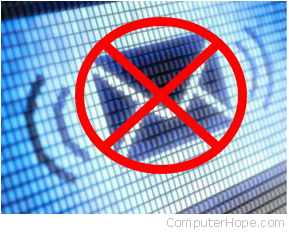Why is my e-mail not getting to the recipient?

When you send an e-mail to one or more recipients, you usually assume that it was successfully received by them. However, when an e-mail is not delivered, you probably question what happened and why. Sometimes, you'll get a return e-mail, also called a bounce back message, stating the problem and the cause, but this isn't always the case.
There are several reasons why an e-mail is not delivered to a recipient. The following sections contain suggestions and proposed solutions to these issues. To proceed, review each link below for further information.
E-mail sent to invalid e-mail address

Sending an e-mail to an address that is misspelled is guaranteed to result in a failed delivery. While it may seem basic, it is easily overlooked and happens often.
Even if it's spelled correctly, an e-mail address also needs to exist in the first place. If not, the e-mail cannot be delivered. Most services and clients send you a non-delivery notification that tells you the e-mail address does not exist, isn't found, or other important information.
A non-delivery notification may be sent to your spam folder.
To resolve these issues, verify the e-mail address is spelled correctly and that it's valid before sending your message. You may want to contact the recipient by phone to confirm these details.
E-mail sent to Junk folder

E-mails can sometimes end up in a recipient's Junk folder without them realizing it. For instance, that person may have previously flagged your e-mails as junk by accident, resulting in all future messages being diverted to the Junk folder.
E-mail clients or services may also flag messages as graymail, a type of e-mail not considered spam, but isn't classified as important e-mail either. E-mails in this category can often end up in the Junk folder.
To resolve these issues, first have the recipient check their Junk folder. If the e-mail is there, it can be changed to "not Junk," which allows future messages to go to the recipient's Inbox. Then, have them also check their e-mail service's spam list to ensure your address isn't included.
E-mail marked as spam by e-mail provider

Many e-mail providers have anti-spam protection built into their service. This feature attempts to detect if an e-mail is spam, and if so, blocks it from being delivered. While it can be helpful, the anti-spam protection mechanisms sometimes get it wrong, that is to say, they incorrectly mark messages as spam.
If the e-mail is getting sent to a business, they may have a security system that works to detect spam e-mail. Like the anti-spam protection of an e-mail provider, the system tries to determine if an e-mail is spam, and then blocks it accordingly.
To resolve an incorrect spam detection, ask the recipient to request that their e-mail provider or security system whitelist your e-mail address. If it's personal contact, have them check their e-mail service or client's settings to ensure you're not blocked.
Recipient's mail server blocked the e-mail

All e-mails travel through a mail server. Sometimes, a message may be blocked due to the suspicious content found in those that were sent previously. Suspicious content can include viruses, malware, and links to malicious websites.
If you think recipients are not receiving your e-mails because the mail server is blocking them, contact the recipient by phone or through another e-mail account. Work with them to determine if your mail server is in fact being blocked by the recipient's mail server. If so, the server's administrator might consent to review the block or make an exception.
Sending mail server listed on a blacklist

The most severe reason e-mails are not delivered to a recipient is because a mail server is blacklisted. When a mail server is a source of spam or suspicious content, a company often adds it to a blacklist. Blacklists let e-mail providers and security systems know that they should block all incoming traffic from the source in question. There are over one hundred e-mail blacklists and the mail server your client or service is utilizing could be on one or more of them.
To resolve this issue, contact your e-mail provider to ask them to check with the company you're trying to send a message. Have them find out if their mail server is on that company's blacklist.
If you work at a company and your e-mails are being blocked due to blacklisting, contact your e-mail administrator, cybersecurity administrator, or IT (information technology) help desk. Ask them to remove any blocks associated with your messages.
You can quickly check if a mail server is listed on an e-mail blacklist by visiting the MxToolbox website.
E-mail contains an attachment
E-mail attachments are a great way to send files, folders, images, and short videos to other users over the Internet. Unfortunately, they're also a convenient delivery method for viruses and other malware. Consequently, there are e-mail services and clients that block certain messages based on their attachments' file types, like executable files.
For example, while most Microsoft Word and Microsoft Excel documents are usually fine, they may encounter issues if they contain macros. As such, some e-mails containing .docm (macro-enabled Word file) or .xlsm (macro-enabled Excel file) files may be blocked. The same goes for compressed (zipped) files.
To address the first issue, we recommend contacting the recipient to make sure there aren't filters for files that may contain macros. As far as ZIP files are concerned, we suggest utilizing a different delivery medium, such as a file transfer application, rather than compressing many larger files into a zipped package.
Recipient hasn't had time to respond
If you don't know the recipient or have a separate means of contacting them (e.g., phone number) to verify they're receiving the e-mail, they may not have had time to respond yet. Many people, and some companies, don't respond to every e-mail they receive and instead delete those that do not interest them.
If you're trying to reach someone not responding by e-mail, try other forms of communication, such as a website contact form or through social networking.
